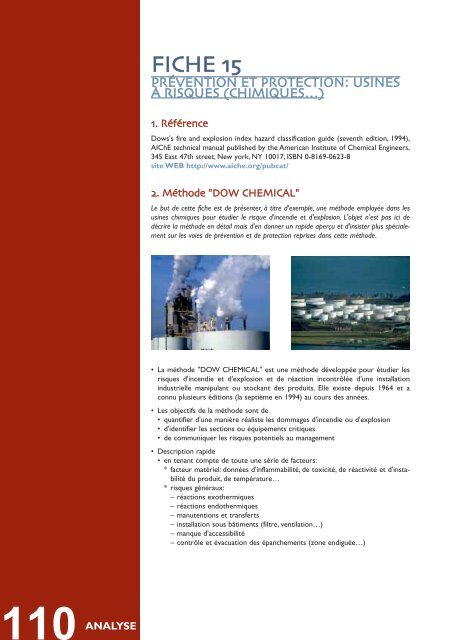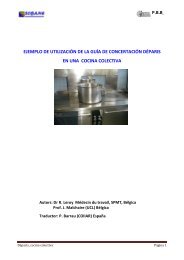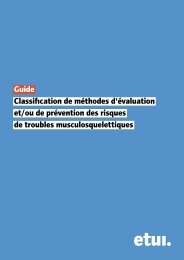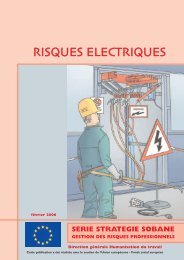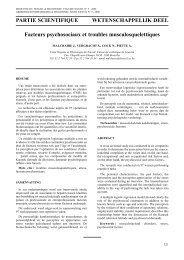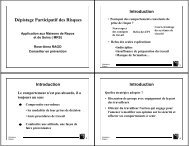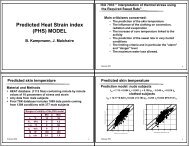risques d'incendie ou d'explosion - Unité Hygiène et Physiologie du ...
risques d'incendie ou d'explosion - Unité Hygiène et Physiologie du ...
risques d'incendie ou d'explosion - Unité Hygiène et Physiologie du ...
- No tags were found...
You also want an ePaper? Increase the reach of your titles
YUMPU automatically turns print PDFs into web optimized ePapers that Google loves.
FICHE PRÉVENTION ET PROTECTION: USINESÀ RISQUES (CHIMIQUES…). RéférenceDows's fire and explosion index hazard classification guide (seventh edition, 1994),AIChE technical manual published by the American Institute of Chemical Engineers,345 East 47th stre<strong>et</strong>, New york, NY 10017, ISBN 0-8169-0623-8site WEB http://www.aiche.org/pubcat/. Méthode "DOW CHEMICAL"Le but de c<strong>et</strong>te fiche est de présenter, à titre d'exemple, une méthode employée dans lesusines chimiques p<strong>ou</strong>r étudier le risque <strong>d'incendie</strong> <strong>et</strong> <strong>d'explosion</strong>. L'obj<strong>et</strong> n'est pas ici dedécrire la méthode en détail mais d'en donner un rapide aperçu <strong>et</strong> d'insister plus spécialementsur les voies de prévention <strong>et</strong> de protection reprises dans c<strong>et</strong>te méthode.• La méthode "DOW CHEMICAL" est une méthode développée p<strong>ou</strong>r étudier les<strong>risques</strong> <strong>d'incendie</strong> <strong>et</strong> <strong>d'explosion</strong> <strong>et</strong> de réaction incontrôlée d'une installationin<strong>du</strong>strielle manipulant <strong>ou</strong> stockant des pro<strong>du</strong>its. Elle existe depuis 1964 <strong>et</strong> aconnu plusieurs éditions (la septième en 1994) au c<strong>ou</strong>rs des années.• Les objectifs de la méthode sont de• quantifier d'une manière réaliste les dommages <strong>d'incendie</strong> <strong>ou</strong> <strong>d'explosion</strong>• d'identifier les sections <strong>ou</strong> équipements critiques• de communiquer les <strong>risques</strong> potentiels au management• Description rapide• en tenant compte de t<strong>ou</strong>te une série de facteurs:* facteur matériel: données d'inflammabilité, de toxicité, de réactivité <strong>et</strong> d'instabilité<strong>du</strong> pro<strong>du</strong>it, de température…* <strong>risques</strong> généraux:– réactions exothermiques– réactions endothermiques– manutentions <strong>et</strong> transferts– installation s<strong>ou</strong>s bâtiments (filtre, ventilation…)– manque d'accessibilité– contrôle <strong>et</strong> évacuation des épanchements (zone endiguée…)110ANALYSE


